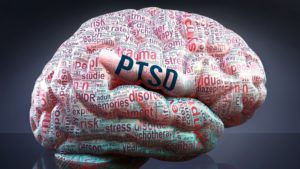Guide to using medical cannabis
The leaves and flowers of the Cannabis plant are consumed in several forms: dried flower buds or various types of concentrated, loose, or pressed resin extracted from the flowers or leaves through a variety of methods. Once mature, the plant’s leaves and flowers are covered with trichomes, tiny glands of resinous oil containing cannabinoids and terpenes that provide physical and psychoactive effects.
The best guide for the use of medical marijuana
There are many, many types of cannabinoids and terpenes. Concentrations of each type of cannabinoid ranges widely from plant to plant and strain to strain. The first identified and best-known cannabinoid is THC. THC has the most significant psychoactive effect of the cannabinoids. The ratio of THC to other cannabinoids varies from strain to strain. While THC may cause a variety of psychoactive and therapeutic effects, non-psychoactive cannabinoids have physiologic effects that can be therapeutic. Find out more about this in our guide to using medical cannabis.
Effects of medical marijuana
Different people have different experiences. One individual may feel stress release, while another feels over-stimulated and stressed, while another feel energized and on-task. There are many factors that impact the effect: Amount used, (dosage), Strain of cannabis used and method of consumption, Environment/setting, Experience and history of cannabis use, Biochemistry, Mindset or mood, Nutrition or diet and types of cannabis. Though cannabis is biologically classified as the single species Cannabis Sativa, there are at least three distinct plant varieties: Cannabis Sativa, Cannabis Indica, and Cannabis Ruderalis, though the last is rare. There are also hybrids, which are crosses between sativa and indica varieties.
Most medical cannabis is used for pain and nausea control, appetite stimulation, reduced muscle spasm, improved sleep, and others. But individual strains will produce noticeably different effects. In general, sativas and indicas are frequently distinguished as follows:
Sativas
Primarily affects thoughts and feelings. Some noted therapeutic effects from use of Sativas:
- Stimulating/energizing
- Increased sense of well-being, focus,creativity
- Reduces depression, elevates mood . Relieves headaches/migraines/nausea
- Increases appetite Some noted Side-Effects from use of Sativas
- Increased anxiety feelings
- Increased paranoia feelings
Indicas
The primary effects are on the body. Indicas tend to produce sedated feelings, and many prefer it for nighttime use. Some noted therapeutic effects from use of indicas:
- Provides relaxation/reduces stress
- Relaxes muscles/spasms
- Reduces pain/inflammation/headaches/migraines
- Helps sleep
- Reduces anxiety
- Reduces nausea, stimulates appetite
- Reduces seizure frequency/anti-convulsant
Hybrids
Strains bred from crossing two or more varieties. For example, a sativa-dominant cross may be helpful in stimulating appetite and relaxing muscle spasms. Crosses are reported to work well to combat nausea and increase appetite.
Cannabis Extracts and Concentrates
The dried flower is the most widely consumed form of cannabis. Concentrates are made from cannabinoid-rich glandular trichomes, which are found in varying amounts on cannabis flowers, leaves and stalks.
Kief
Kief is a powder made from trichomes removed from the leaves and flowers of cannabis plants. It can be compressed to produce cakes of hashish, or consumed (typically smoked) in powder form in a pipe or with cannabis bud or other herbs.
Hashish
Hashish (hash) is a collection of compressed or concentrated resin glands (trichomes). Hash contains the same active cannabinoids as the flower and leaves but typically in higher concentrations. In other words, hash is more potent.
- Hashish usually is a paste-like substance with varying hardness with THC content ranging from 15-70%.
- Often smoked with a small pipe. Can be used in food, in a hookah, vaporizer or mixed with joints of cannabis bud.
- The effects of hash vary in the same way strains of cannabis do.
Hash oil
Hash oil is a mix of essential oils and resins extracted through the use of various solvents. The solvent is then evaporated, which leaves the oil. Hash oil tends to have a high proportion of cannabinoids (-a range from (30 to 90% THC). Can be smoked with a specialty pipe, with a vaporizer, with cannabis bud in a pipe, joint, or added to food.
Cannabis Edibles
Cannabis added to foods. It can also be brewed into a tea or other beverage. To be effective, cannabis and its extracts or concentrates must be heated in order to convert the cannabinoid tetrahydrocannabinolic acid into active THC. Digestive processes alter the metabolism of cannabinoids and produce a different metabolite of THC in the liver. Onset of effects are delayed and last longer, and are also very variable from individual to individual.
Cannabis Oil & Butter
Cannabis Oil (cannaoil) or Butter is cooking oil or butter infused with cannabinoids. Can be used in any recipe that includes oil and that doesn’t go over 280 degrees. Think cookies, cakes, candies, and other food items.
Tincture
Tinctures use ethanol alcohol (e.g. pure grain alcohol, not rubbing alcohol) to extract the cannabinoids. You use droplet amounts, and it is absorbed through the mucous membranes in the mouth.
Spray
Sublingual sprays use a tincture. You use a pump to spray cannabis-alcohol solution under your tongue.
Cannabis Liquor
Liquor may be infused with cannabinoids. Can be added to coffee and other beverages.
Cannabis Topicals (applied to the skin)
Cannabinoids combined with a penetrating topical cream can enter the skin and body tissues and allow for direct application to affected areas (e.g. allergic skin reactions, neuralgia, muscle strain, inflammation, swelling, etc.).
- Both THC and Cannabidiol (CBD) have been found to provide pain relief and reduce inflammation.
- Topical cannabis use does not produce a psychoactive effect, which is different from eating or inhaling the medicine. Different types of cannabis topicals include:
- Salve: cannabinoids heated into coconut oil combined with bees wax and cooled. Rub directly on skin.
- Cream: cannabinoids heated into shea butter combined with other ingredients and cooled. Rub directly on skin. Topicals may produce anti-inflammatory and analgesic or pain relief. Research has to date been limited to studies on allergic and post-herpes skin reactions and pain relief. Anecdotal reports on topical treatment efficacy include:
- Certain types of dermatitis (including atopic) and psoriasis
- Balm for lips, fever blisters, herpes
- Superficial wounds, cuts, acne pimples, furuncles, corns, certain nail fungus
- Rheumatism and arthritic pains (up to the 2nd degree of arthritis)
- Torticollis, back pains, muscular pains and cramps, sprains and other contusions
- Phlebitis, venous ulcerations
- Hemorrhoids
- Menstruation pains.
- Cold and sore throat, bronchitis
- Asthmatic problems with breathing
- Chronic inflammation of larynx (application in the form of a Priessnitz compress)
- Migraine, head pains, tension headaches
- Pharmaceutical Cannabis or Cannabinoids
Cannabis Consumption
Ingest via Eating
This is one of the safest ways to consume your medication. The effects from eaten cannabis may be more pronounced and onset of the effects will be delayed by an hour or more and typically last longer than inhalation. Using edible cannabis effectively will usually take some experimentation as the effect varies from person to person. Use small amounts of edibles and wait 2 hours before gradually increasing the dose, if needed. Try cannabis pills made with hash or cannabis oil or ingest via Tinctures/Sprays. Start with no more than two drops and wait at least an hour before increasing the dosage, incrementally and as necessary.
Apply via Topicals
This is one of the safest ways to consume your medication. Topical cannabis will not result in a psychoactive effect.
Inhale via Smoking
Because the effects are noticed or felt quickly, this is a good way to get immediate relief and find the best dose for you. Research has shown that smoking cannabis does not increase your risk of lung or other cancers, but it may produce unpleasant bronchial effects such as harsh coughing. Take smaller, shallower inhalations rather than deep inhales. Holding smoke in does not increase the effects.
Inhale via Vaporizer
This is the safest way to inhale your medicine because it heats the cannabinoid-laden oils to the point where they become airborne vapors, drastically reducing the amount of tars and other chemical irritants that you inhale.
Inhale via a Pipe/One-Hitter/Steam Roller
Use a glass, stainless steel, or brass pipe; avoid wood or plastic pipes.
Inhale via a Bong/Water Pipe
Don’t use a bong or water pipe regularly. You can inhale water vapor or water drops into your lungs.
Think About Drug Interactions
No significant interactions between cannabis and other drugs are known at this time, though research indicates cannabis enhances the effects of opiate painkillers.
Risks of Marijuana Use
Though you may have heard otherwise, marijuana can be addictive: Nearly 10% of people who use it become dependent on it. It isn’t clear whether marijuana is a gateway drug. Even if you buy from a legal, state-regulated dispensary, it can be hard to know exactly how much THC or other compounds may be found in the marijuana you’re ingesting, so the effects can be unpredictable. Marijuana can also cause health problems if you have a condition like liver disease, low blood pressure, or diabetes. If you’re a man, heavy use could lower your testosterone levels, your sperm count and quality and your libido. Research shows a link between marijuana use and mental health problems like depression, anxiety, suicidal thoughts, short-term psychosis, and schizophrenia. It is not clear if marijuana causes these conditions, or can make them worse.
CANNABIS AND CANNABINOIDS
EFFECTIVENESS
There is substantial evidence that cannabis or cannabinoids are effective for:
- Treatment of chronic pain in adults – primarily neuropathic pain.
- Treatment of chemotherapy-induced nausea and vomiting.
- Improving patient-reported multiple sclerosis spasticity symptoms.
There is moderate evidence that cannabis or cannabinoids are effective for:
- Treatment of short-term sleep outcomes (associated with obstructive sleep apnea, fibromyalgia, chronic pain, MS).
- Treatment of drug-resistant seizures with CBD in children and young adults with Dravet syndrome.
There is limited evidence that cannabis or cannabinoids are effective for:
- Increasing appetite/decreasing weight loss associated with HIV/AIDS.
- Improving provider-measured MS spasticity symptoms. o Improving Tourette syndrome symptoms.
- Improving post-traumatic stress disorder (PTSD) symptoms. There is no or insufficient evidence that cannabis or cannabinoids are effective for all other diseases and conditions, due to lack of published clinical trials.
SIDE EFFECTS
From clinical trials, the following side effects were reported more often among participants receiving cannabinoids than among controls: dizziness, disorientation, confusion, euphoria, dry mouth, drowsiness/somnolence, nausea, fatigue, asthenia.
DRUG INTERACTIONS
There is evidence of clinically significant drug-drug interactions between cannabis and cannabinoids and the following medications: Chlorpromazine, Clobazam, CNS depressants (e.g. barbiturates, benzodiazepines), disulfiram, hexobarbital, hydrocortisone, ketoconazole, MAO inhibitors, phenytoin, protease inhibitors (indinavir, nelfinavir), theophylline, tricyclic antidepressants, warfarin.
- The fact that drug interactions have not been reported does not mean they do not exist!
GENERAL RISKS OF MARIJUANA USE
Cannabis use is associated with increased risk of motor vehicle crashes.
- Cannabis users can develop cannabis use syndrome.
- Cannabis users are more likely to be addicted to illicit drugs. Cannabis users are more likely to have memory impairment. THC can cause dose-related acute psychotic symptoms. Cannabis use is associated with the development of schizophrenia.
- Frequent cannabis use is associated with bronchitis.
- There is mixed evidence whether cannabis use increases the risk of lung cancer
- THC crosses the placenta and into the fetus.
- THC can be present in breast milk.









